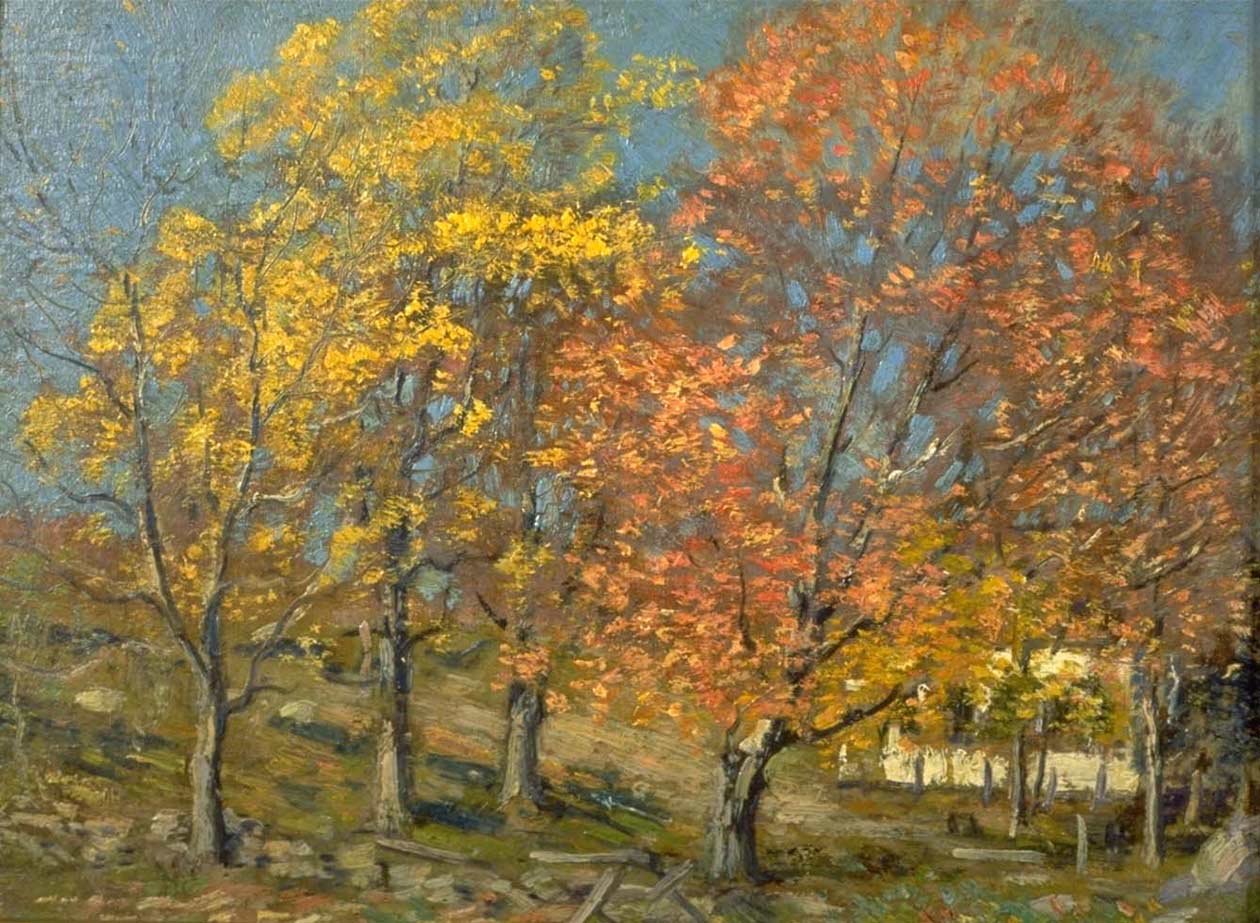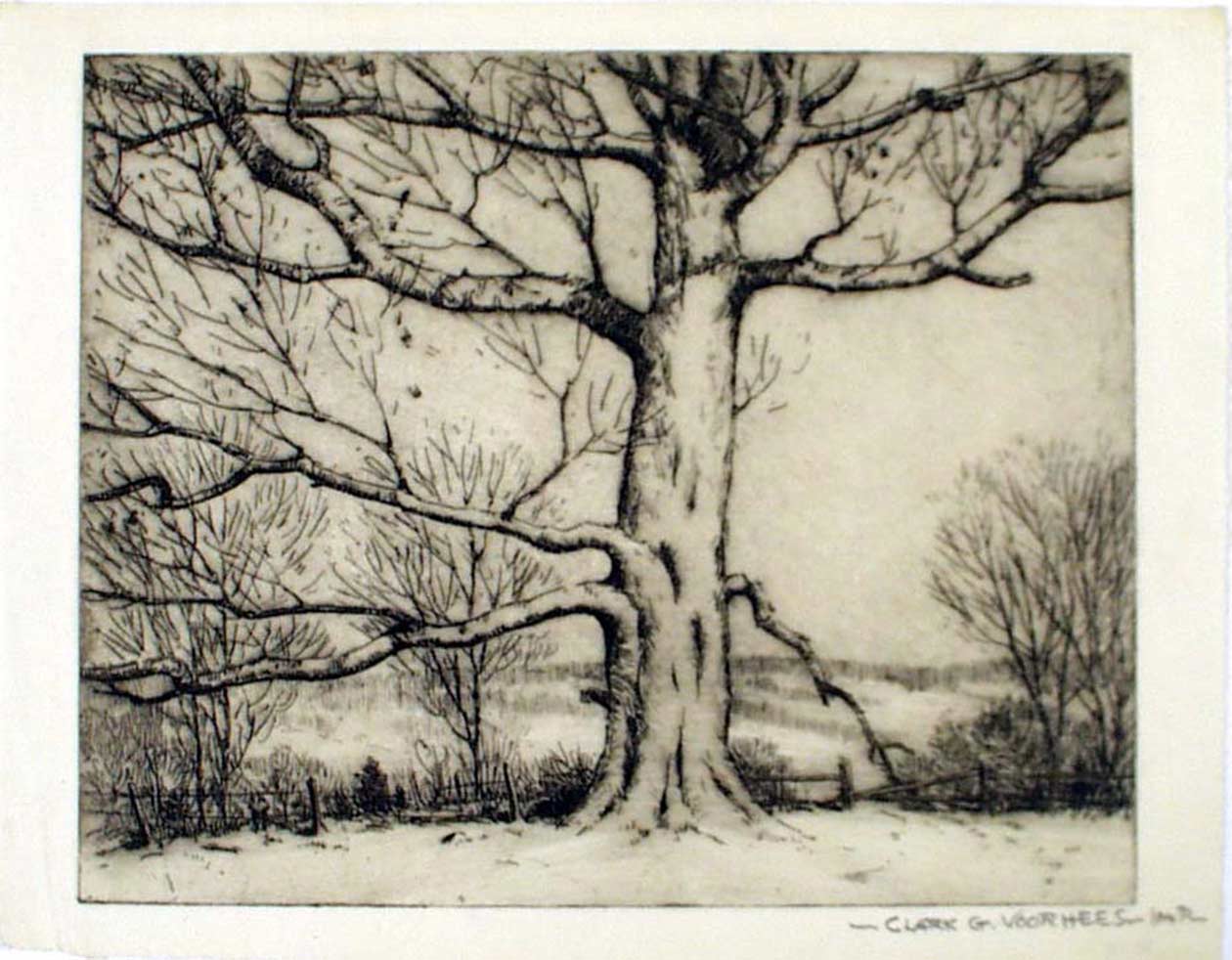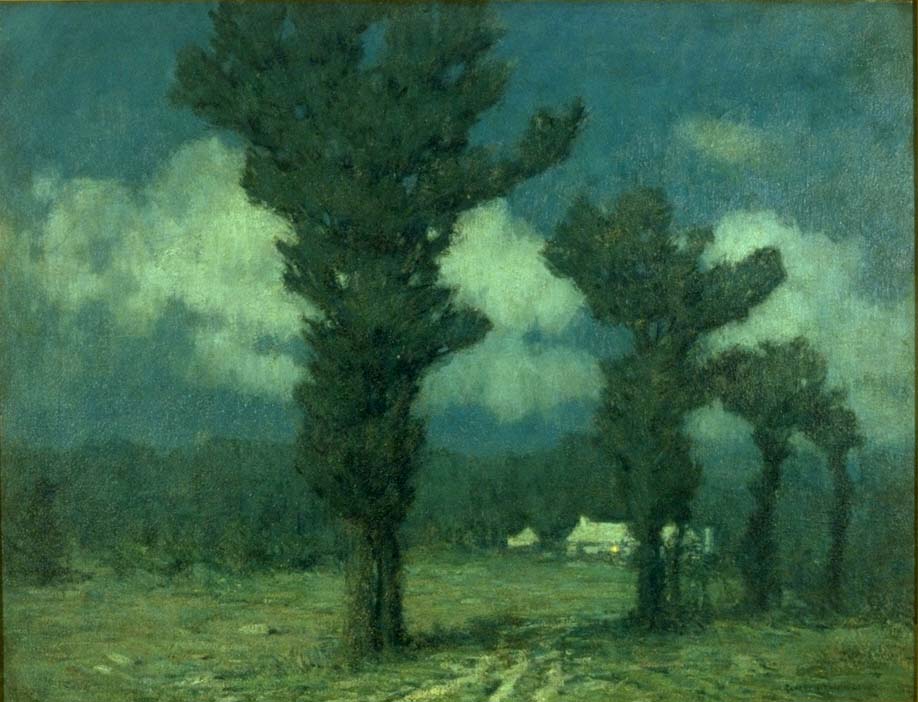Collections
In Situ: The Painted Panel
- The Museum and Café will be closed Friday, July 4.
Clarke Voorhees (1861 – 1926)
Whippoorwill Road
Clark Voorhees’ painting of a dirt road in Old Lyme, curving in front of a barway and a stonewall, with woods beyond, is the most unusual in the dining room, because we see what appears to be only the bottom half. The fact is that this door required glass in its upper part, so that people coming down the back stairs could see if someone might be struck when the door was opened. We can use our imaginations to complete the image, but it can be argued that the painting is not incomplete at all. One simply has to regard it as an image that has been cropped, like some photographs, by the frame of a “window.” It is interesting because of its design and the soft colors that suggest the light and feel of a day in spring (although a few orange leaves can be seen dangling from the branches – perhaps leftover from the previous fall). Whippoorwill Road begins just up the road from the Griswold House and winds through a varied terrain of Old Lyme past rocky outcroppings and forests as well as some open meadows and small farms. It is easy to imagine that Voorhees discovered many vistas like this one on his many bike rides through the area.
CLARK VOORHEES (1861-1926)
WHIPPOORWILL ROAD (SPREADING OAK IN FENCED AUTUMN WOODLAND)
OIL ON WOOD PANEL
GIFT OF THE ARTIST
The tall, very straight tree at the left attracts one’s eye so strongly that it is difficult to look elsewhere for long.
But seeing two or three of its branches reach far into the space of the right-hand panel unites the two panels and confirms for the viewer how sturdy and healthy this tree must be. While these panels are meant to be seen as one picture, a separate examination of each can also be a satisfying experience.
Voorhees, who had trained as a chemist before studying art in New York and Paris, met not only Henry Ward Ranger but Childe Hassam in Old Lyme, and his paintings show the influence of both.
Tonalism’s muted tones are here, but so is Impressionism’s lack of detail and dabs of pure color. Voorhees continued to blend the two visions – in Old Lyme and also in Bermuda, where he wintered after 1919.





